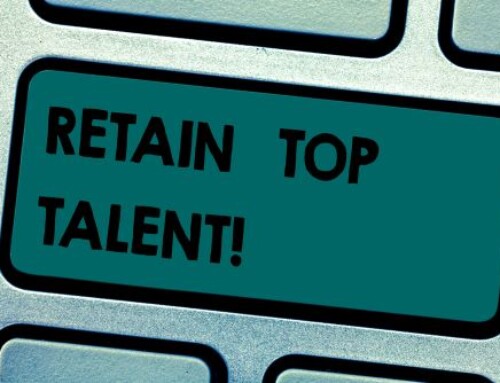Over the last few decades, much has been discussed about work-life balance. People recognize that to have the life they truly love, to be present at work, at home, and to make the most impact in the ways they want; they can’t do it all. Employees desire more of what’s truly important (including self-care), creating the career path they want, and designing their lives so there’s simplicity and order to find harmony in both work and life.
Since the COVID-19 pandemic and the Great Resignation, many organizations now understand that employees value work-life harmony so much that they are willing to alter the workforce to get it.
What exactly do employees find harmonious in today’s workplace?
FLEXIBILITY VIA JOB AUTONOMY
One of the most significant changes that employees expect is agility in the workplace. Many workers were confident that the work they had been doing in traditional offices could be done outside the confines of standard office spaces. The pandemic’s social distancing concerns and regulations allowed workers in technology, finance, and many professional business services to explore hybrid and remote work options. The ability to work when, where and the way they work best is what employees desire most.
- In a study conducted by Jabra of over 5,000 knowledge workers, 59% assert that job flexibility is more important than salary and other benefits. 75% of knowledge workers indicate that organizations must rethink benefit structures to remain competitive. Knowledge workers include IT professionals, system analysts, technical writers, researchers, engineers, physicians, scientists, financial analysts, pharmacists, and highly skilled areas of expertise. (1)
- A study published by the WFH Research Project found that job seekers and employees value job flexibility as much as they do a 10% pay raise. (2)
- A survey by IWG found that nearly 50% of office workers would quit if asked to return to the office five days a week, while almost 75% said they would prefer the option of hybrid working to a 10% pay raise if offered the choice. (3)
- In another study also published by WFH Research Project with over 17,000 respondents, 50% of employees would prefer to work in hybrid work environments, with workers in the technical, financial, and business services sectors expressing the strongest preference to do so. (4)
- In a mixed study of 1,000 employees and employers by Skynova, nearly half of respondents indicated flexibility was more important than salary, and almost 40% believed job flexibility was more important than pay raises. (5)
- A study by McKinsey found that nearly 60% of workers in the United States can work remotely at least part-time. When offered the option to work remotely, 87% of workers take employers up on the opportunity. (6)
Why Should Leaders Champion Job Flexibility and Autonomy?
Shifting Demographics of the Workforce
The workplace will change in less than three years and do so dramatically. The companies that don’t want to adapt to flexibility and autonomy will be forced to do so. If the pandemic and the Great Resignation haven’t impacted the workplaces yet, the millennials and the following generations entering the workforce will. It’s going to be a different work environment with new worker expectations.
- Employees working “out of sight” increased productivity by 5%. (7)
- In a Forbes survey, by the end of 2025, millennials will represent 75% of the workforce. The U.S. Bureau of Labor Statistics predicts that over 75% of the workforce will be millennials by 2030. (8)
- 75% of millennials desire full-time remote work or working from home. (9)
- 95% of millennials prefer jobs that offer the ideal work-life harmony. (9)
Finding the Sweet Spot
Since the pandemic, the hybrid model has become a novel method for employees to complete work. Its popularity will only continue to rise. However, there is still significant value in face-to-face interaction and the traditional office space. Organizations should recognize the value of in-person exchanges and collaboration with colleagues and the optimal time to spend in the office to maximize productivity.
- Intermediate hybrid work, translating to working in the office 1-2 days per week and the rest remotely, seems to balance flexibility, and workers are not as isolated. (10)
- Sadly, a study of 200 senior executives demonstrated a preconception that hybrid workers were disadvantaged when compared to in-office counterparts. The specifics of how remote workers are disadvantaged were cited as: 52% overly reliant on others to collaborate, 47% lack access to leadership, 43% less connected to office culture, and 41% less likely to be promoted. (11)
- After analysis of some 30,000 emails, the same study found that contrary to senior leadership misgivings, hybrid workers performed better and received higher ratings from managers than those who worked entirely at home or mainly in the office. (11)
PRO TIP: While salary and compensation as better career opportunities still rank as the top two reasons people seek new employment, job flexibility follows closely behind. (12) Work-life harmony is increasingly attractive to workers. When new hires can choose between jobs of similar skills and compensation, flexibility and job autonomy may be the deciding factor. This is also a saving factor to salvage top talent relationships leaving voluntarily for jobs that may offer more flexible options.
INFORMATION AND KNOWLEDGE
The great work-from-home experiment brought on by the pandemic cast light on some of the issues plaguing the workplace for years. Specifically, access to information, technology, and shared knowledge was amplified. Whether workers were on sight or working remotely, corporations need to get better about how information and knowledge are shared among employees and the technology that is utilized. Data security is also something that needs to be addressed.
Some facts to consider:
- 7 out of 10 workers report that finding information to do their job is too time-consuming. (13)
- 62% of employees don’t know what others are working on. (13)
- 66% of employees report missing opportunities to collaborate in the modern workplace. (13)
- 56% of employees said they had to ask more than one person for help. (13)
- 54% of employees state that applications make it harder to find information. (13)
- 49% of employees report a high risk of important information getting lost. (13)
- 43% of employees spend too much time switching between different online tools. (13)
- 21% of mistakes result from an inability to access information on the company’s apps/online tools.
- The average worker spends 59 minutes daily (up to 5 hours per week) trying to find what they need. (13)
- Only 40% of employees feel they are adequately informed about their company’s goals, strategies, and tactics. (14)
- About 24%, 22%, and 29% of those aged 21–31 use Dropbox, Google Drive, and iCloud to store work documents, respectively. This is one of the crucial problems companies with millennials in the workplace face. Namely, using such services without permission often presents security risks. Hence, enterprises tend to put IT restrictions to prevent this from happening. (15)
Why Should Leaders Want Worker Access to Knowledge?
Quality information shared among peers, and other workers who are encouraged and appreciated adds value to the organization. Workers who provide this are found to be four times more productive. (16)
In the top 10% of top workplaces, 82% of employees report being very well informed about critical organizational decisions. (17)
Knowledge sharing and retention have a positive influence across the board. However, codification (e.g., translating existing knowledge into an understandable format so every employee can locate, understand, and implement without specialized knowledge) is vital to job satisfaction, new ideas, and innovation. (18)
The systems today are not always efficient for modern technology. For example, some files can’t be sent via email due to file size limitations or file type restrictions established by the IT department. Another example is that some organizations still use fax machines for sensitive items such as medical records, financial files, or legal documents believing that digital encrypted transfer isn’t safe. Employees need to understand the limitations of technology and workarounds (if available). Alternately utilize employees to develop and evaluate new systems and innovations that will allow the company to grow and keep up as technology evolves.
Discover inspiring ideas for exciting experiences that boost morale and engage your people. Contact Gavel International for details.
__________
SOURCES:
- https://www.jabra.com/hybridwork
- https://www.cnbc.com/2022/01/07/stanford-professor-expect-huge-battles-over-working-from-home-soon.html
- https://assets.iwgplc.com/image/upload/v1643045613/IWG/MediaCentre/hpd65ydmsjsovoknfgfu.pdf
- https://www.cnbc.com/2022/01/07/stanford-professor-expect-huge-battles-over-working-from-home-soon.html
- https://www.skynova.com/blog/flexibility-in-the-wfh-day
- https://www.mckinsey.com/industries/real-estate/our-insights/americans-are-embracing-flexible-work-and-they-want-more-of-it
- https://www.bloomberg.com/news/articles/2021-04-22/yes-working-from-home-makes-you-more-productive-study-finds
- https://goremotely.net/
- https://www2.deloitte.com/cn/en/pages/about-deloitte/articles/deloittes-gen-z-and-millennial-survey-reveals-two-generations-striving-for-balance-and-advocating-for-change.html
- https://www.hbs.edu/faculty/Pages/item.aspx?num=62281
- https://www.bloomberg.com/news/articles/2022-04-12/one-or-two-days-in-the-office-is-the-sweet-spot-of-hybrid-work?sref=QnKyEnuc
- https://www.bloomberg.com/news/articles/2022-04-12/one-or-two-days-in-the-office-is-the-sweet-spot-of-hybrid-work?sref=QnKyEnuc
- https://www.mckinsey.com/business-functions/people-and-organizational-performance/our-insights/gone-for-now-or-gone-for-good-how-to-play-the-new-talent-game-and-win-back-workers
- https://www.bloomberg.com/news/articles/2021-04-22/yes-working-from-home-makes-you-more-productive-study-finds
- https://www.achievers.com/blog/23-employee-motivation-statistics-to-silence-naysayers/
- https://goremotely.net/blog/millennials-in-the-workplace/
- https://www.forbes.com/sites/nazbeheshti/2019/01/16/10-timely-statistics-about-the-connection-between-employee-engagement-and-wellness/#619e5c3d22a0
- https://www.energage.com/well-informed-employees/
- https://www.researchgate.net/publication/327926911_Impact_of_Knowledge_Management_on_Employee _Work_Performance_Evidence_from_Saudi_Arabia
- 9 Experiences to Fall in Love with the Renaissance City: Florence, Italy - April 22, 2024
- How to Build Corporate Meeting KPIs that Will Demonstrate ROI to the C-Suite - April 1, 2024
- 3 Reasons Why Travel Incentives Are a Worthwhile Investment - March 18, 2024







